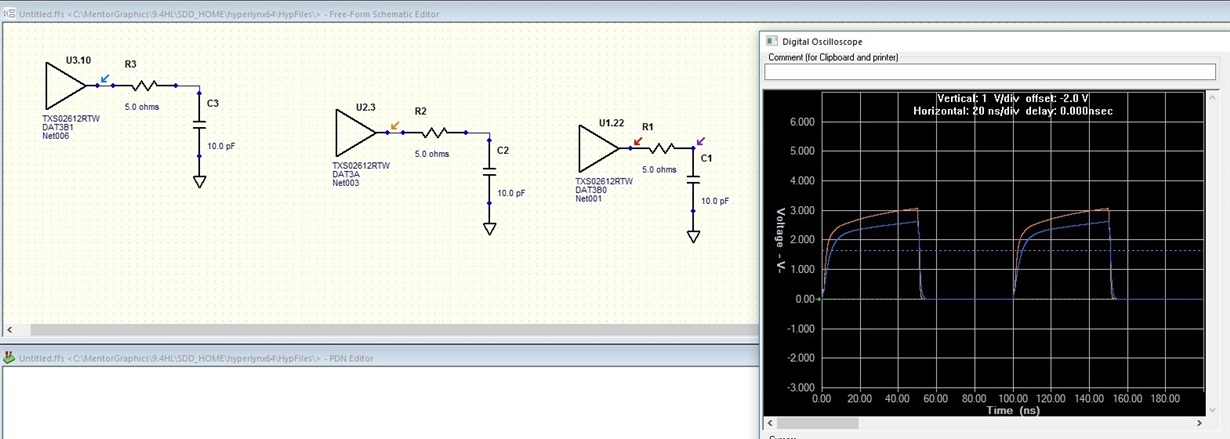Other Parts Discussed in Thread: TS3A27518E
Dears , I have an SDIO signal issue when using this TXS02612 . My simple DMAIC report is attached here . SCH is also provided . In my design . the SD card is used to split out to 2 SD card ports in level one . then a second TXS02612 is used in level 2 to generate another 2 SD card . they are supplied by the same VCC3V3 .
but I found that , when signal tranfer from port B to port A , there is a 0.8V decreased . I analyzed it is not caused by the power sequence or design .
In case you can,t download the file , my summarize :
1, Enable SEL pin and design is right , as we can see perfact signal from A to B0 .
2, power Sequence is not cause , as I only used TXS02612 , and lead VCCA VCCB SEL , data1A data1B0 . the sequence and data direction can be controlled by manual .
3, signal from B0 to A , no problem . using signal generator .
can you help to confirm if there is some error that I missed .
thanksTXS02612 SD Issue.pdf



